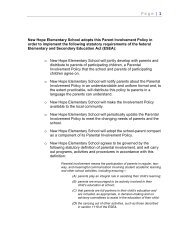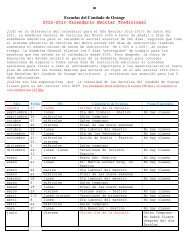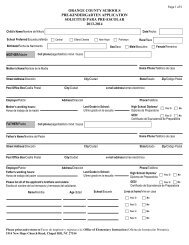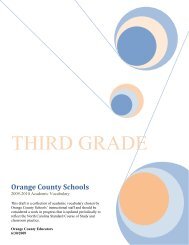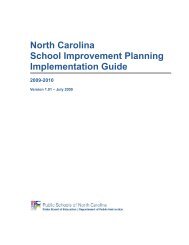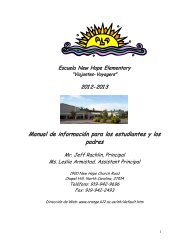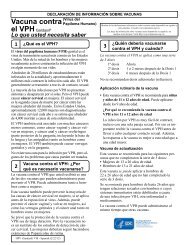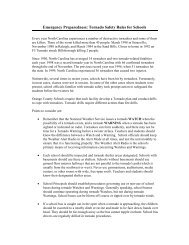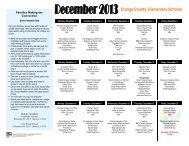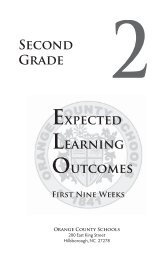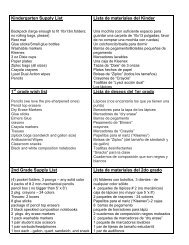Closing the Achievement Gap - Washington State School Directors ...
Closing the Achievement Gap - Washington State School Directors ...
Closing the Achievement Gap - Washington State School Directors ...
You also want an ePaper? Increase the reach of your titles
YUMPU automatically turns print PDFs into web optimized ePapers that Google loves.
Questions to Guide <strong>the</strong> Discussion1. Have <strong>the</strong> schools’ learning environments been assessed? How? Is itknown if students and staff perceive <strong>the</strong>ir school to be a positive placeto learn? Do students view <strong>the</strong>ir teachers as approachable and caring?To what degree are students connected to <strong>the</strong>ir school and engaged inschool activities?2. What do discipline statistics say about practices? Are certain groupsof students over-represented in discipline actions taken?3. What is being done to counteract <strong>the</strong> negatives of large school size?To what degree is <strong>the</strong> district exploring restructuring to smallerschools or creating smaller learning environments? Is <strong>the</strong> districtconsidering school size in both short and long term facility planning?4. Is staff educated in <strong>the</strong> asset building model and risk and protectivefactor research and are <strong>the</strong>y applying this information in <strong>the</strong>ir practices?5. What is <strong>the</strong> staff’s attitude toward students? Do staff members prejudgestudents and <strong>the</strong>ir potential based on race, culture or economicstatus?“Independent of race,ethnicity, family structureand poverty status,adolescents who areconnected to <strong>the</strong>ir parents,to <strong>the</strong>ir families and to <strong>the</strong>irschool community arehealthier than those whoare not.”— Reducing <strong>the</strong> Risk:Connections that Make aDifference in <strong>the</strong> Lives of YouthPolicy Recommendations1. Track discipline reports and analyze discipline data to determine if patternsexist that reveal differences in discipline along racial, cultural andsocio-economic lines. Revise policies and/or procedures and provide stafftraining to make needed changes based on findings.2. In district and school improvement plans, include specific goals andindicators of achievement associated with effective schools, such as (a) acaring and supportive school culture; (b) valuing and incorporating highexpectations for all students; and (c) assessing improvements in studentattendance, staff attendance and student involvement in school athleticsand activities. Measure school climate.3. Implement policies for a personalized learning environment in everyschool in which every student has a mentor or an adult advocate.4. Implement policies that require schools to conduct periodic assessmentsof school climate through analysis of student attendance, disciplineactions, and staff turnover and through surveys of students, staff andparents.What <strong>School</strong> Districts Are DoingMead Middle <strong>School</strong>, in <strong>the</strong> Mead <strong>School</strong> District (www.mead.k12.wa.us),is implementing an alternative middle school with a grant it received from<strong>the</strong> Office of <strong>the</strong> Superintendent of Public Instruction. With a GatesFoundation grant <strong>the</strong> school will combine with <strong>the</strong> alternative middleWASHINGTON STATE SCHOOL DIRECTORS’ ASSOCIATION35




